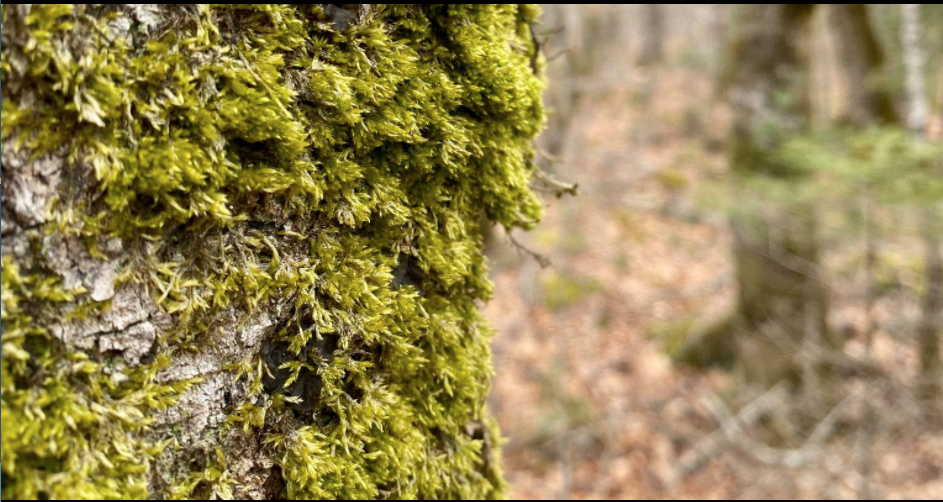From Nova Scotia Species at Risk (Public Facebook page)
Homalotheciella subcapillata, a species of moss, was discovered last month near the Digby-Yarmouth county line in southwestern Nova Scotia. It is the first documented occurrence of the species in the province, and among its northernmost known global occurrences. Homalotheciella subcapillata grows on hardwood trees, sometimes near streams. Reproduction is monoicous, meaning that both male and female sex organs are borne on the same plant. Not much else is readily known about the species.
Conservation status in Nova Scotia: NOT LISTED
You can help Homalotheciella subcapillata and other rare mosses by refraining from activities that degrade habitat, including ATVing off designated trails and in wetlands, and clearcutting (as opposed to selective tree felling), which creates large gaps in the forest canopy, drying out newly-sun-exposed ground and lowering humidity in adjacent forest, to the detriment of all shade- and moisture-requiring plants and lichens.
Below is an appeal for a strong Biodiversity Act, written by wildlife biologist Brad Toms and touching on the recent Homalotheciella subcapillata discovery:
@IainTRankin If you value expert advice, well here it is. I am an expert in biodiversity conservation in Nova Scotia. I’ve dedicated my entire career to it. We need a full strength Biodiversity Act. Full stop. This act was created by subject experts as originally written because there was a gap in law that needed to be filled. As an example, last week one of my colleagues discovered a new species of moss in the province. We know very little about what this species requires to survive and thrive in Nova scotia. We don’t know its distribution. We have this single new site, with a new species and it overlaps with planned forestry. Currently we have no legal mechanism to temporarily remove threats to that species so that it does not get immediately extirpated from the only known site. This happens fairly often.
High school biology and even university/college might give the impression that we have a good handle on how many species we have and where they are…I mean we have field guides? and museum collections? and over a hundred years of looking right?
Well as with anything the more you dig into things the more you learn that we really don’t have a handle on these things. We are still learning. We are still discovering new species several times every year.
The problem is that we’re in the middle of a global biodiversity crisis and Nova Scotia is not excepted from that. We have been leaders in this province. The first to have an Endangered Species Act in Canada and we have many exceptional collaborative species recovery projects.
The Biodiversity Act, in its original form, is a tool that will help us as a province keep species from getting to the point where they are listed as at risk of extinction. It’s doing thing right the first time rather than creating expensive species recovery projects afterward.
It’s working with landowners who are managing their woodlots and farms sustainably and to the benefit of rare species and rewarding them for doing so.
This is the fate of species. It should not be in the hands of a few petulant, wealthy, white male settlers who are clinging to the small amount of power they have to, at will, ravage the lands that their ancestors stole from the Mi’kmaq. Experts agree that we need a full strength Biodiversity Act and we’ve needed it for many years. No amount of childish foot stomping changes that fact.
March 30, 2021
Addendum. Views expressed here are [the author’s] own.
Photo credit: “Photo 119127381” by Tom Neily is is licensed under CC BY-NC 4.0 / Enhanced in Photos, cropped for Facebook
www.creativecommons.org/licenses/by-nc/4.0/legalcode

